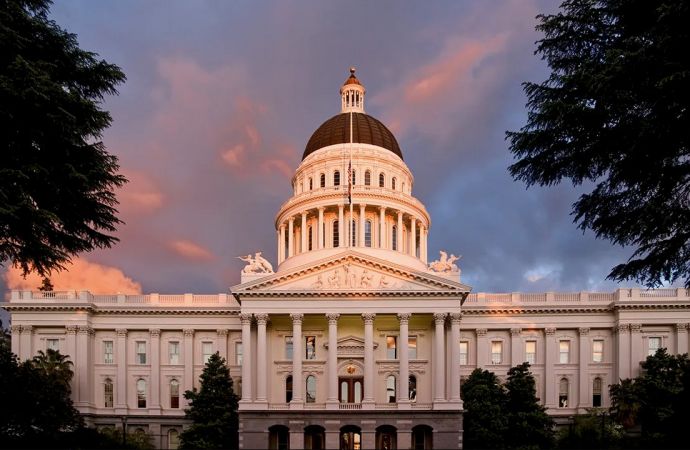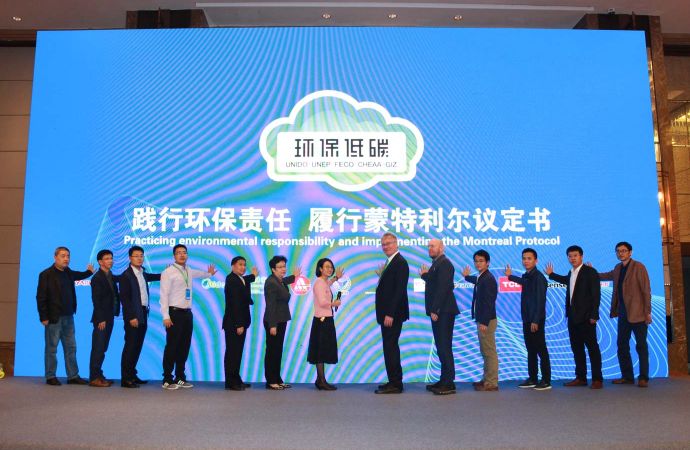California agency seeks input for adopting EPA SNAP’s HFC delisting rules and SLCP strategy’s HFC phase-down plans.

The California Air Resources Board (CARB) held a public workshop Tuesday, October 24 as the first step towards adopting the Environmental Protection Agency (EPA) Significant New Alternatives Program (SNAP) rules on HFC delistings. The workshop also addressed next steps on regulating high-GWP HFCs through CARB’s Short-Lived Climate Pollutants (SLCP) Strategy.
CARB hopes that California’s adoption of the EPA SNAP rules on HFC reduction will eliminate some of the regulatory uncertainty following the three-judge U.S. Court of Appeals for the District of Columbia ruling in August barring the EPA from removing HFCs from its list of approved replacements for ozone-depleting refrigerants.
That ruling has since been appealed by intervenors Chemours, Honeywell and the Natural Resources Defense Council (NRDC) – but not the EPA. There is no word yet from the full Appeals Court regarding whether it will rehear the case.
Either way, California Senate Bill 1383 calls for a statewide 40% reduction in HFC emissions below 2013 levels by 2030, prompting CARB to hold the rulemaking workshop.
As the regulatory body tasked with meeting that emissions target, CARB has been relying on the EPA SNAP program to drive 24% of the state’s HFC reductions. Another 45% percent of the HFC reduction is expected through the SLPC Strategy and 26% from the Kigali Amendment.
CARB’s proposed plan is to adopt all provisions from the EPA SNAP rules 20 and 21 – which delist high-GWP HFCs – by reference for stationary refrigeration and air conditioning. That would include:
- Supermarket systems (new and retrofit)
- Remote condensing units (new and retrofit)
- Stand-alone (self-contained) refrigeration
- Refrigerated vending machines
- Retail food (refrigerated food processing and dispensing equipment)
- Cold storage
- Chillers
CARB is not adopting EPA SNAP rule provisions regarding mobile refrigeration and air conditioning or foam blowing agents – as there are already state standards programs in effect for those applications.
If the courts uphold the SNAP rules delisting high-GWP HFC use, however, CARB will go back to relying on the federal EPA regulations.
This is another example of California's leadership in the move towards natural refrigerants, and this will be warmly welcomed by the industry.” – Derek Hamilton, vice president of business development for Portland, Ore.-based shecco America.
A draft of the regulation CARB is proposing for adoption of the EPA SNAP rules, as well as a link to leave a public comment, is available here: https://ww2.arb.ca.gov/hfc-reduction-measures-rulemaking .
Comments on the draft regulation will be accepted until November 10 for a staff report will that be published in January 2018. Another 45-day public comment period will begin February 2018, and the regulation could go into effect mid-to-late 2018.
"This is another example of California's leadership in the move towards natural refrigerants, and this will be warmly welcomed by the industry,” said Derek Hamilton, vice president of business development for Portland, Ore.-based shecco America, who attended the workshop.
SLCP Strategy moves forward
The second part of CARB’s proposed HFC-reduction rulemaking is outlined in its SLCP Strategy, and would prohibit the use and sale of a range of synthetic refrigerants.
The plan includes, by 2021:
- Prohibition of refrigerants with a GWP of 150 or greater in new refrigeration systems containing 50 or more lbs of refrigerant.
- Prohibition of refrigerants with a GWP of 1,500 or greater in new refrigeration systems containing 20 to 50 lbs of refrigerant.
- Prohibition of refrigerants with a GWP of 750 or greater in new air conditioning systems containing two or more lbs of refrigerant.
- Prohibition of refrigerants with a GWP of 150 or greater in new chillers (refrigeration or air-conditioning).
Regarding the sale of high-GWP refrigerants, the SLCP Strategy would include:
- By 2020, no production, import, sale, distribution or entry into commerce of refrigerants with a GWP of 2500 or greater.
- By 2024, no production, import, sale, distribution or entry into commerce of refrigerants with a GWP of 1500 or greater.
CARB will hold public workshops and stakeholder meetings on the proposed SLCP Strategy measures through Summer 2018, with a potential effective date for the regulation of mid-2019.
While 2021 (when many of the new rules would take effect) is not far away, CARB said it believes the schedule to be feasible based on the fact that low-GWP refrigeration technology is currently available. CARB also said it is considering barriers like cost, safety, current codes and standards and availability of trained technicians in its rulemaking process.
Related stories



